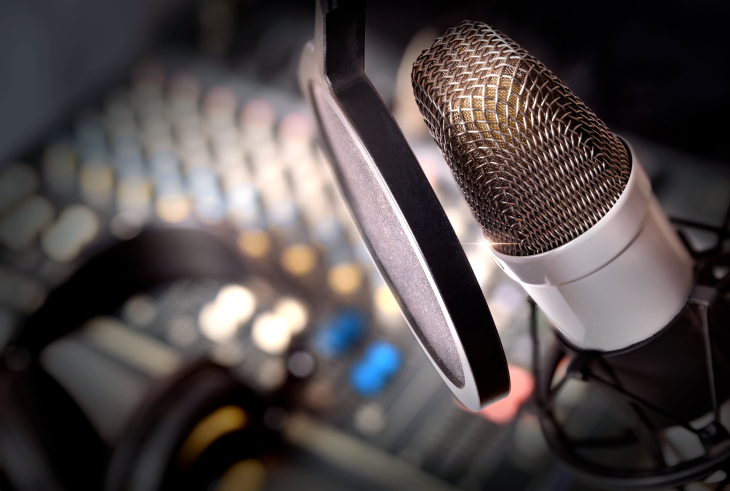Ep 3 Live Q&A – March 6 2019 – How do you breathe while singing?
Mike Elson: So, We’ve got a couple people on the line already. That’s great. Let’s jump into our first question. So, I’ve got here from [Namia 00:02:08] Howard. Thanks for writing in.
Mike Elson: She writes in, how to breathe while singing? So, today’s question, the first one we’re starting with is how do you breathe when you’re singing. What do you have for us?
Matthew Edwards: Yeah. So, this is, I think, to me, is breathing for singing is one of the most, I guess, controversial things in some circles of singing. People can get really worked up about it. I think that we’re all better when we have open dialogues about it, and we focus on what we know about how the breathing mechanism actually works and start from there knowing there are a whole lot of ways for people to breathe and sing and get success. Right? So, we need to, to me, be open-minded, while acknowledging the facts of what we know about the singing voice.
Matthew Edwards: I’m going to throw out a recommendation for everybody real quick. This is Respiratory Function in Singers and I highly, highly recommend this book. It is written by a speech-language pathologist and audiologist. He goes through all kinds of research that’s been done on how the respiratory system interacts with the vocal folds, how different lung capacities affect the vocal mechanism and he gives you fact-based answers. I think it’s just a great resource for both singers and teachers. It can be a little heady at times, but I also think he does a nice job of kind of bringing things down to a practical place.
Mike Elson: Yeah, while we’re on that. What are one or two or some of the best ideas that you can share with us from there?
Matthew Edwards: Yeah. So, one of the things he talks about is that we have these active force and passive force when we breathe. Okay?
Mike Elson: Okay.
Matthew Edwards: So, let’s take this balloon for example. This is a lot like a lung, okay? Our lungs are filled with millions and millions of what are called alveoli. The alveoli are little, teeny balloons. Just like this balloon has an elastic recoil that when I blow it up, it wants to snap back in, the little balloons inside of our lungs want to recoil, as well. So, if I fill up my lung full of air and I let go, it’s just going to release all the air into the room.
Mike Elson: Right.
Matthew Edwards: Hixon calls that passive recoil. Okay? So, our passive force. It’s the passive force that happens when we exhale. It’s just going to happen because of that elastic recoil.
Mike Elson: How much of that is elastic recoil versus atmospheric pressure?
Matthew Edwards: You want to get into physics?
Mike Elson: Okay, no, no. That’s-
Matthew Edwards: I’m not the person to get into physics with you. Yeah. So, part of it is atmospheric pressure. That an area of greater pressure wants to move to an area of lower pressure.
Mike Elson: I just know that if you go to Aspen and you’re singing, at high altitude, things like that, it’s hard to get that air in because there’s less of it, right?
Matthew Edwards: Yeah. I teach in Colorado about every other year, out in Greeley. Yeah, that’s a different experience being out there for a couple days. So, when the air is thinner, your body reacts to it differently. So, the idea is with this active force versus passive force is that when you breathe in, your lungs are going to want to recoil. They’re going to want to let that air back out. That we can’t really control. It’s just going to happen. Otherwise, if we don’t release that air, our lung starts to fill up with carbon dioxide. It’s bad for you. So, you have to have that gas exchange in order to stay alive.
Matthew Edwards: Then active force is when we do things like contract our abdominal wall to sing and that we’re literally trying to push our guts inside and upwards towards our diaphragm, which at the same time, our abdominal muscles pull down on our rib cage and helps force the air out. I think that’s one of the big concepts from this book, that once people start to think about it, it can really impact their singing. Do I actively need to be forcing air out of me or can I just passively let it go?
Matthew Edwards: So, if you’re singing a breathy ballad, let’s say you want to sing a little Ed Sheeran, we’re going to do, (singing) I don’t have to do a whole lot to get that air to release from my body. It’s just going to happen. In fact, if I try to use active force, if I try to compress my abdominal wall as I make those sounds, it can end up getting kind of strained. I could end up with (singing) It’s too much pressure for that vocal mechanism.
Mike Elson: Right. Okay.
Matthew Edwards: At the same time, if I want to sing an operatic aria and we’re going to do Votre Toast from Carmen and I just let my body rely on that passive force, feeling of that recoil, elastic recoil. I would get (singing) It’s there. The voice is there, but it doesn’t have the real power that you need to project acoustically. So, instead, if I really breathe in, expand and contract my abdominal wall and get that active force, we’ll see if the mic can handle it. I would go from a passive force, (singing) to active force, (singing) and it starts to give me that extra power that I need to project acoustically as an opera singer, right?
Mike Elson: Got it.
Matthew Edwards: So, you have to be thinking about what kind of output you’re looking for. So, one of the things that Hixon talks about is the more air that’s in your lungs and the more active force you put on it, the louder you’re going to be, which is why opera singers spend so much time learning how to tank up and how to really contract their abdominal wall to project into a 3,000 seat house with no microphone.
Matthew Edwards: If we then look at the flip side of that, which is less air, is going to give us less amplitude of our voice and then we think about breathy ballad something like Good For You by Selena Gomez where just going (singing). I don’t need a whole lot of air, right? It takes care of itself. So, that is making a breathing adjustment based off of the facts that we know about the respiratory system, right?
Matthew Edwards: Then we get into tonal goals. In tonal goal lies you may have some people that think that that really super weak breathy sound doesn’t work as nice as if you give it a little bit more core. So, then, we could have a discussion about whether or not we’re going to contract the abs because we like the sound that we get when we make that or we’re going to leave everything alone because we don’t want it to sound like it’s got too much pressure underneath of it, right?
Mike Elson: Got it. Okay.
Matthew Edwards: So, the basic place for people to start is to begin with breathing like you have something important to say, right? Everybody probably has had to give a speech or a talk somewhere and in some point in their life or you’ve had to have that important conversation to tell your parents you’re moving out or tell your significant other that we’re done. Most people don’t go, “I’m breaking up with you.” They breathe and then they’re like, “Look-
Mike Elson: There’s a lot of songs about that.
Matthew Edwards: Right. They breathe like it’s important and they’re like, “Look, this isn’t working.” They take a nice full breath to say the thing that’s important and has to be said. I think that for singers if you just started that place of breathing like you have something important to say, that is your good base entry-level place to start thinking about respiration. Then you and I had some talks earlier today about how some of the practices from meditation can really help your body start to adapt to that. You want to touch on that for a second?
Mike Elson: Yeah. Sure. I mean just some of the exercises you’ll do. If you meditate, that’s a great practice just to keep a calm mind and keep your thoughts in control of your mind, right? It’s a great exercise, all right? As it relates to singing, some of the exercises I’ve done, they kind of relate to meditation too is just take a deep inhalation. You count for like in for, right? Then you hold it for four counts and then … right? Then you out four, right? You can slowly do that and build … I build my way up to 10 counts in, 10 counts hold, 10 counts out, right? That’s just a very simple and it’s meditative in a way. Then you can do it an alternate version of that where you leave out the hold. You just go in for, out for, right?
Mike Elson: So, there are a few variations of that. While you do it, it’s very calming. It puts you in touch with the breath which is largely every time I’ve done some of them … my favorite meditation app right now if you guys don’t have it is Headspace. I definitely love that app. Doing that, it just … you’re trying to calm your mind and that can be sometimes important when you have a lot of things going on. Whatever is going on in your life or before a performance too, just to keep your nerves at bay before you go on stage and before you do your next thing. So, just getting in touch with your breath and realizing, “Hey, I’m just breathing. I’m focusing. I’m listening and breathing.” That can be a very good skill to develop as a performer, so absolutely.
Matthew Edwards: Yeah. So, that to me is in the next step, right? So, you just begin breathing like you have something important to say and then you start training the respiratory system with those extended breaths, right? So, like you said trying to get up to 10 is a great goal. So, your first week, see if you can start at fours then five, six, seven, eight, nine until you’re getting up to 10 in, 10 hold and 10 exhale, right? Sounds a lot easier than it actually is. Once you start being able to get up to that-
Mike Elson: Be careful. By the way, if you’re going to pass out or anything like that, maybe stop the exercise. You can definitely get to the point where you start feeling lightheaded. That’s a point where you definitely are not getting the right oxygen exchange if you start to feel a little fuzzy. So, please, I’m not a doctor by any means. If you do these exercises and either not only for breathing like start feeling lightheaded, stop. Same for singing. If you’re ever doing exercises and something just doesn’t feel right, please stop. Don’t keep going, okay? So, just disclaimer there.
Matthew Edwards: Absolutely. Yeah. We don’t need passed out singers at home as they’re watching this video.
Mike Elson: [inaudible 00:12:16] voice lessons that were a great idea.
Matthew Edwards: So, I think to me that’s like your basic starting place. Then I know we have other variations of this that we’re going to touch on tonight. What’s the second one that we have there Mike? I think we have time to spend-
Mike Elson: Yeah, cool. Let’s move into the next question here, so question number two. Let me scroll down.
Matthew Edwards: It’s about better breath control.
about the author
Mike ElsonMike loves to sing and make magic happen with computers and music. After trying lots of ways that didn't work to find his head voice, his voice ended up broken and his concepts mixed up. Before there was Google, he rebuilt his technique from square one with Dr. Joel Ewing, providing him plenty of humility and loads of first-hand empirical knowledge about the inner workings of the voice. Mike strongly believes that "everyone should be trained as a tenor," because of the additional skills required in balancing registration for this specific voice type. He has enjoyed singing in Mrs. Kim Barclay Ritzer's award-winning GVHS choir in Las Vegas, Nevada and with Dr. Dhening's internationally acclaimed USC Chamber Choir in Los Angeles, CA. Mike brings his passion for singing along with his pedigree to bring the voice training industry a new platform to make online voice lessons more successful, help choirs raise funds, and grow better singers. VoiceLessons.com is a way to pay it forward to a new generation of singers who are looking to start their training or take their voices to the next level by searching for options online. Welcome, and enjoy!
RECENT ARTICLES
RECENT IN KNOWLEDGE
Recent Topics
- Beginning Voice Lessons (1)
- Breathing Techniques (1)
- Confidence (1)
- Experienced Teacher (1)
- Kids Singing Lessons (1)
- Musical Career (1)
- Practice (1)
- Private Lessons (1)
- Professional Singer (2)
- Sing (1)
- Singing Teachers (2)
- Style (1)
- Teach Online (1)
- Vocal Exercises (1)
- Vocal Health (1)
- Vocal Music (1)
- Vocal Pitch (3)
- Vocal Range (4)
- Voice Coach (1)
- Voice Exercises (2)
- Voice Training (4)
- Young Vocalist (1)
Categories
- Basic Skills (7)
- Beginners (8)
- Career (2)
- CCM (1)
- Contemporary Commercial Music (1)
- Crossing Over (1)
- Exercises (2)
- Online Lessons (3)
- Online Voice Lessons (1)
- Songs (2)
- Students (6)
- Tips (4)
- Vocal Coaches (1)
- Voice Teachers (2)
- Warmups (2)
Testimonials




-
Ep 10 Live Q&A - April 24, 2019 Question 7 - How do I shape my mouth when I sing vowels?
-
Ep 10 Live Q&A - April 24, 2019 Question 1 - How do you control a vibrato that is too fast?
-
Ep 4 Live Q&A - March 13, 2019 - How do you know your voice is damaged?
-
Ep 3 Live Q&A - March 6 2019 - How much breath do you need to support a good belt?
-
No Post Found!!







